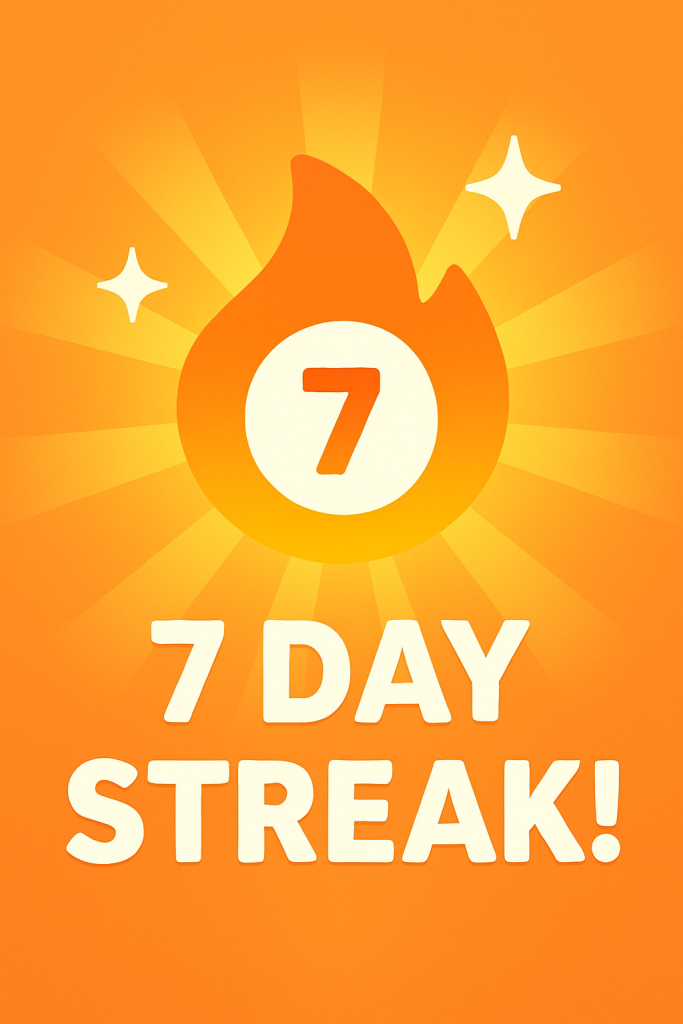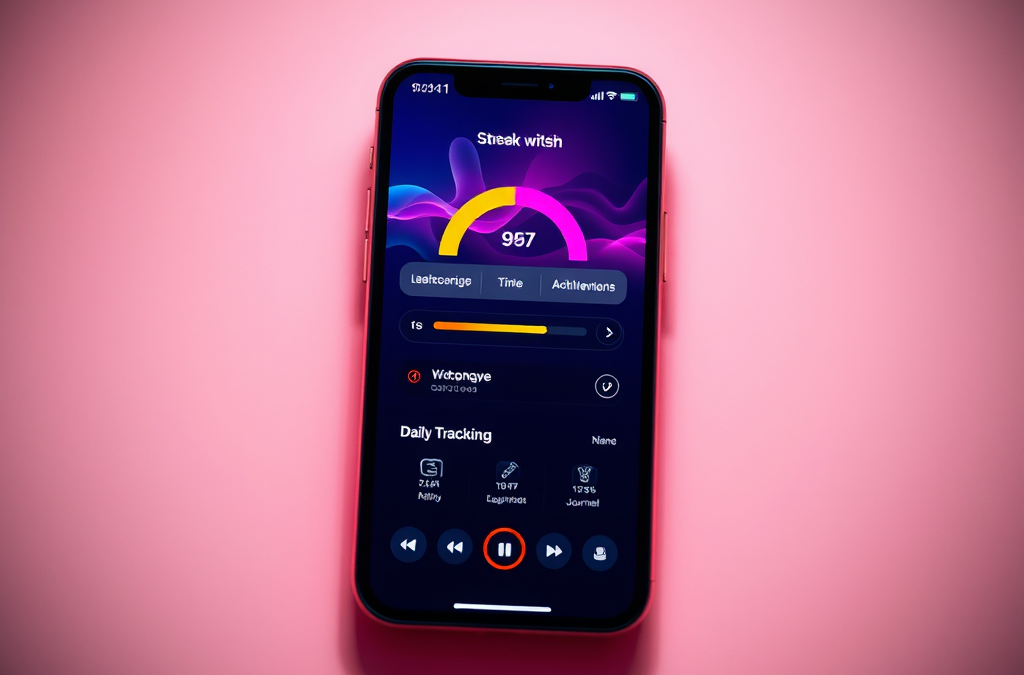Streak systems are powerful. They tap into the psychology of consistency and habit-forming, making users want to come back day after day.
Whether it’s Duolingo reminding you not to break your language learning streak, or a fitness app keeping you accountable for daily steps, the pattern is clear: streak systems work.
Table of contents
In this post, we’ll walk through exactly how to implement a streak system in your app, what technical logic and storage it requires, and how to make the experience feel encouraging rather than punishing. We’ll also explore real-world examples and best practices that can help you turn this feature into a habit-building powerhouse.
What Is a Streak System?
A streak system is a mechanism that tracks how many consecutive days a user performs a specific action inside your app. The idea is simple: each day the user completes the activity, the streak count increases. If they miss a day, the streak resets to zero (or one, depending on your logic).
Streaks are commonly used in apps that rely on habitual engagement — such as learning, fitness, wellness, productivity, or even content creation. But they’re not limited to any one domain.
Examples:
- In a language app, it tracks daily lessons completed.
- In a journaling app, it tracks daily entries.
- In a workout app, it tracks exercise sessions.
- In a productivity app, it could track daily task completions.
The key benefit is user retention. Streak systems provide motivation to continue using the app because no one wants to “break the chain.”

Why Add a Streak System?
Here’s why streaks are so effective:
- They create emotional investment.
Users become attached to their progress and feel compelled to maintain it. - They gamify the experience.
The visual feedback (calendar ticks, etc.) makes the app fun and competitive — even against oneself. - They encourage daily usage.
A small nudge like “Don’t break your 10-day streak!” is surprisingly motivating. - They improve retention and engagement metrics.
For apps with a freemium model or subscription business, improved engagement can translate directly to revenue.
Core Components of a Streak System
To implement a streak system, you’ll need a few key data points per user:
last_activity_date: The last date the user performed the streak-triggering action.current_streak: Number of consecutive days the user has completed the task.longest_streak(optional but recommended): The user’s personal record — a fun metric to display.streak_updated_today: (optional flag to prevent multiple updates in one day).
You can store these values in a dedicated user_streaks table or embed them directly into your existing user profile model.
Example SQL Schema:
CREATE TABLE user_streaks (
user_id INT PRIMARY KEY,
current_streak INT DEFAULT 0,
longest_streak INT DEFAULT 0,
last_activity_date DATE,
streak_updated_today BOOLEAN DEFAULT FALSE
);
Streak Logic (Pseudocode)
Now, let’s break down how to update a user’s streak:
from datetime import datetime, timedelta
def update_streak(user):
today = datetime.now().date()
last_date = user.last_activity_date
streak = user.current_streak
if last_date == today:
# Already updated today
return
if last_date == today - timedelta(days=1):
# User continued their streak
user.current_streak += 1
else:
# User broke their streak
user.current_streak = 1
if user.current_streak > user.longest_streak:
user.longest_streak = user.current_streak
user.last_activity_date = today
save(user)
This logic should be triggered when the user completes the relevant action — not just when they log in.
When Should the Streak Be Updated?
Only update the streak when the user performs the targeted activity (not simply opening the app). Examples include:
- Completing a workout
- Submitting a journal entry
- Finishing a lesson
- Completing a to-do item
This encourages meaningful interaction — not just checking in.
Designing the Streak UI
How you visualize the streak can greatly impact how users perceive it. Consider the following design elements:
- Flame icon or calendar with ticks to show ongoing streaks.
- Celebration animations at streak milestones (e.g., 7-day or 30-day streaks).
- Badges or trophies for achieving certain streak levels.
- “Freeze pass” or “Skip day token” that protects the streak from breaking once in a while.
These small UX details can build a deeper emotional connection with your app.
Best Practices for a Positive Experience
While streaks are powerful, if misused, they can create negative pressure. Here’s how to implement streaks that motivate instead of frustrate:
1. Be Encouraging, Not Punishing
Don’t make the user feel bad for breaking a streak. Instead, reset gently and invite them to start again.
2. Use Notifications Wisely
A reminder like “You’re on a 6-day streak — don’t stop now!” can nudge a user back into action. But don’t spam.
3. Consider Grace Days
Apps like Duolingo allow a “streak freeze” item to preserve progress if the user misses a day. This makes the system feel more forgiving.
4. Give Visual Progress
Let users see their streak history via a calendar or chart. It makes their effort more tangible and satisfying.
5. Combine With Rewards
Offer badges, XP points, or coins for hitting streak milestones — another incentive layer.
Real-Life Examples
Let’s look at how popular apps have nailed the streak concept:
- Duolingo: Tracks consecutive days of language learning. Uses streak freezes and daily reminders.
- GitHub: Shows green contributions on a calendar. The “commit every day” gamification is subtle but effective.
- Headspace: Highlights streaks for meditation days, subtly reinforcing the habit.
- Snapchat: Tracks Snapstreaks with friends — the social aspect adds a unique dimension.
How Streaks Impact Behavior
The psychology behind streaks is rooted in the concept of loss aversion. Users don’t want to lose progress they’ve already made. Add in habit stacking — where users build routines around the app — and your engagement metrics can rise significantly.
Streaks make progress visible, and that visibility builds momentum.
Wrapping Up
Implementing a streak system is one of the most effective ways to increase daily engagement, retention, and user satisfaction. It encourages habit formation, boosts motivation, and adds a light gamification layer that keeps users coming back.
Here’s a recap of what you’ll need:
- Track the last activity date, current and longest streak.
- Update streaks only on completed actions.
- Reset or continue based on date comparisons.
- Celebrate wins and provide visual feedback.
- Make it forgiving — not anxiety-inducing.
With a thoughtful implementation, a streak system can transform your app from a one-time tool into a daily habit.
Discover more from CPI Consulting -Specialist Azure Consultancy
Subscribe to get the latest posts sent to your email.

